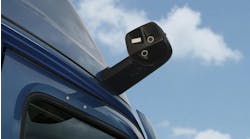Michael Riemer, vice president of product and channel marketing for Decisiv Inc., will tell you that there is a difference between “big data” and “lots of data” because, in many cases, fleets have lots of data that’s actually of poor quality – and it’s that type of low-grade, inaccurate data that can trip up their maintenance practices and lead to potential roadside inspection failures down the road.
“Hand-entered invoices with poor VMRS [vehicle maintenance reporting standards] coding, paper inspection forms transcribed with errors, and limited oversight on external repairs are just a few of the culprits,” he explained to Fleet Owner.
“However, with better tools, ‘lots of data’ can become useful ‘big data’ which can improve decision making while significantly reducing and possibly even eliminate unscheduled service events,” Reimer said.
He also noted that roadside inspection violations are typically the direct result of poorly managed and executed preventive maintenance (PM) and inspection programs – ones often relying on faulty data.
“Too many fleets continue to rely on paper-based solutions where tracking results and capturing usable data is difficult and error prone,” Reimer explained. “Too many fleets also rely on excel spreadsheets and other manual tracking mechanisms for PM compliance.”
For that reason, he said Decisiv recommends that fleets use electronic inspections and automated “closed loop” workflow and notification protocols, as well as more stringent data reporting and analytics, to reduce and hopefully eliminate undesired roadside inspection outcomes.
“Data access is also critical both during and after service events,” he stressed. “If you rely only on after the fact data capture you miss opportunities to course correct or change the outcome.”
For instance, Reimer said going into a service event with knowledge of fault code severity, recommended repair plans, past performance of your specific service providers including average downtime, pending operations and maintenance status as well as any OEM recalls and service bulletins arms you with information to make the best decision possible for your fleet and your driver – especially if it’s managed in the shop and not on the side of the road.
Reimer offers some other data tips designed to allow big data to help fleets avoid “bad outcomes” from roadside inspections:
- Align Pre-Trip Inspection Forms with Roadside Inspections: “Most of the research I’ve seen suggests that more than 75% of roadside violations should have been caught by pre-trip inspections – likely a combination of inspection completeness, compliance and training issues,” Reimer said. “Adjust your form as needed to more closely align with the metrics the CSA [Compliance Safety Accountability] program monitors. Using electronic forms makes this easy – change it once and then publish everywhere.”
- Use Mobile Inspections: Although there's no guarantee that drivers will do their required pre-trip inspections, Reimer stressed that the easier you make it for them to complete those inspections quickly, the more likely they are to get done. “Moving from a paper-based inspection to an electronic one that can be completed using a mobile phone device should increase accuracy and completion rates,” he pointed out.
- Integrate Inspection Failures with Maintenance Practices: This is also known as a “closed loop process” and while some fleets are moving to electronic DVIRs [driver vehicle inspection reports] it requires that the maintenance team go into different applications to get and update the necessary information. “By simply integrating the failures, tying them to specific VMRS coded operations, and having them trigger notifications based on severity or auto-populating pending operations in the context of how maintenance is performed, will significantly drive up repair completion rates in a timely fashion,” Reimer emphasized.
- Automate PM Tracking and Notifications: Electronic logging devices [ELDs] and other telematics solutions can easily capturing truck data to help automate notifications on pending maintenance operations should be very straightforward. “By ensuring high level of compliance with your maintenance schedules, you will also ensure timely repair of any issues before they become roadside issues,” Reimer stressed.
- Audit DVIR Compliance: Once you switch to electronic inspection forms, it's much simpler to determine in real-time who is completing inspections.
- Capture DVIR Results Centrally: Electronically capturing DVIRs in one central system allows you report on analyze failures based on any number of critical factors, Reimer pointed out, including make, model, year, mileage range, geography, and other attributes. “Based on the findings, campaigns can be created and adjustments to existing maintenance practices can also be made,” he said.
- Cross-Check CSA Violations with DVIRs: “If you do receive a [roadside] violation, go back and look at a recent inspection form for that asset,” Reimer stressed. “Did the driver note any concerns about the related issue in any recent reports? If so, why wasn't the problem corrected? If not, perhaps the driver needs a training refresher.”




